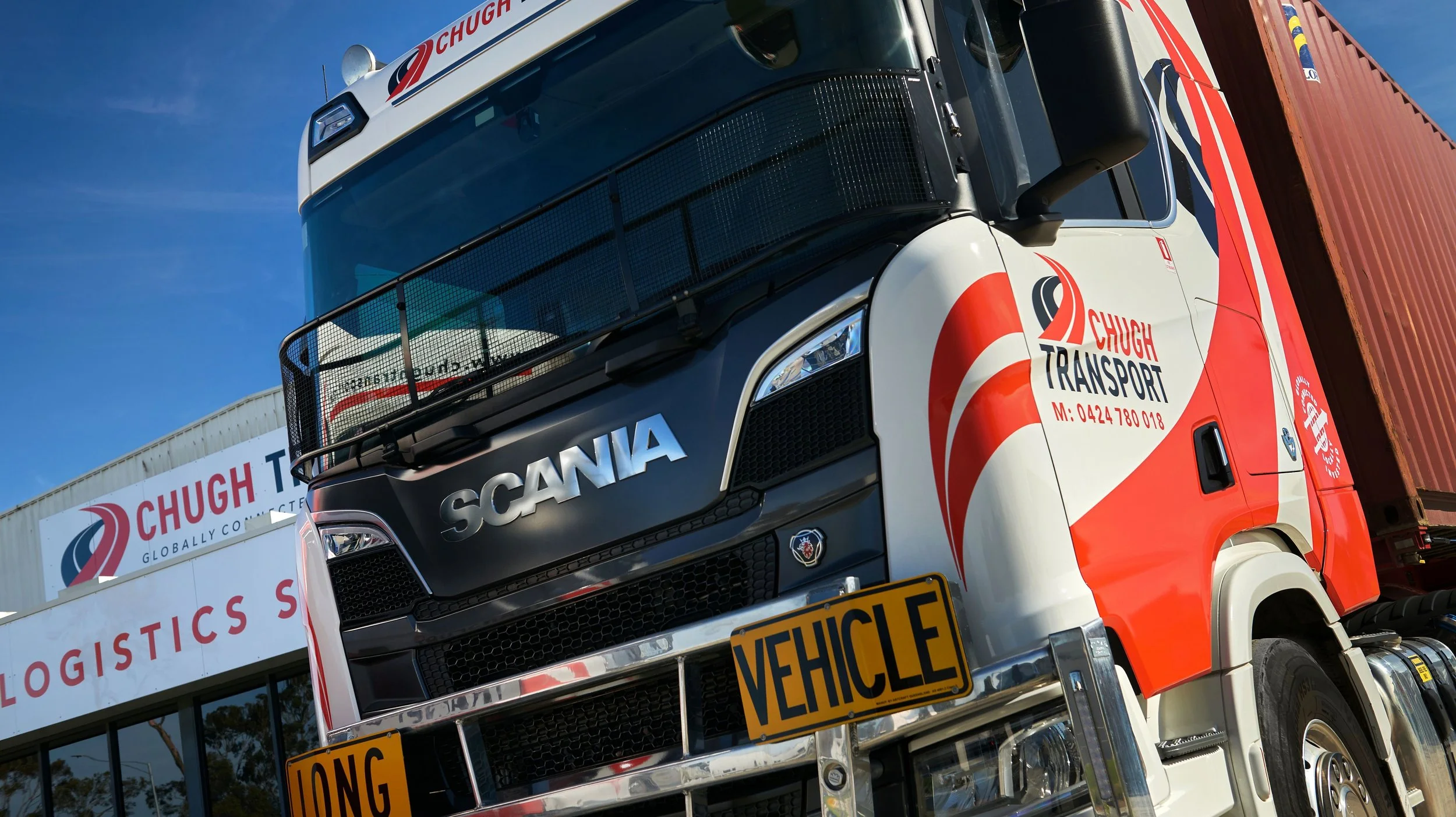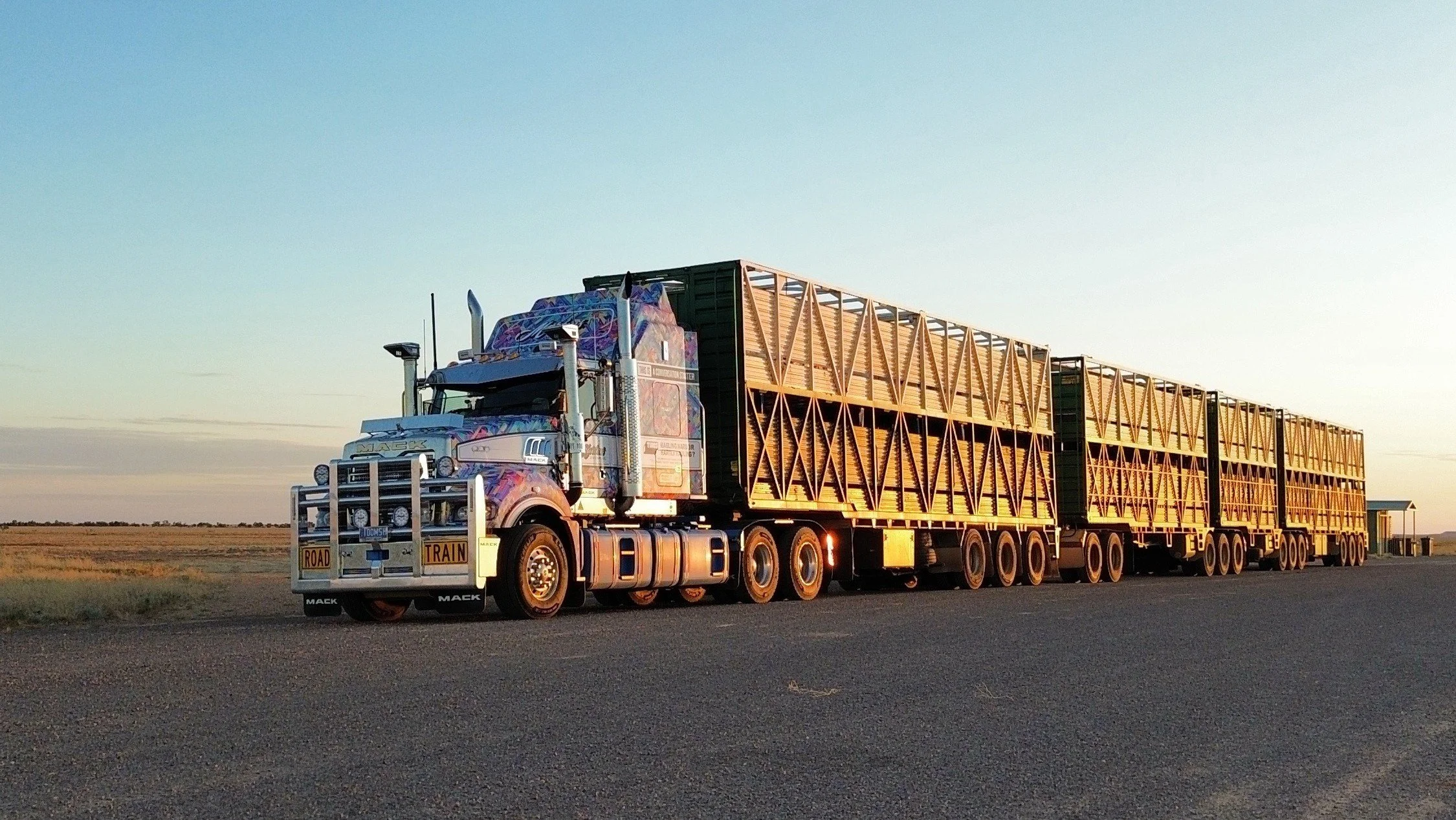<<Rewind 2012: The Ultimate Busman’s Holiday (Home)
Now here's a Big Rig with a difference. We recently came across John and Gayle Schoen sitting outside a bus. Not just any bus, but one of those neat old Clippers that were built when aesthetics were as important as function and were used to traverse our highways between capital cities, back in the days when only the privileged few could afford air travel.
The Schoen's Clipper is a 1972 MCI (7), and is a rare beast, being one of the first 10 imported into Australia by Sir Reginald Ansett. Back in the early '70s the longest bus allowed on Australian roads was 36 feet - commonly GMC's PD4106/7.
As an aside, PD4106's ran the first Detroit 8V71 motors in Australia – before they were in any truck. They ran on a cocktail of 80% kerosene and 20% distillate and put out 262 brake horsepower. The first trucks to use this engine were Kenworths which ran on a 60/40% combination. The N series that followed, pushed the horsepower up to around 290. As the older motors were overhauled, they were converted to N series specifications.
Thirty-six foot wasn't good enough for Sir Reg who talked to (told?) the government of the day that he wanted to run 40 foot jobs imported from America. Ansett wanted the toilets and all the luxuries that the extra 4 feet would allow, without losing seating capacity. In their day the Clippers were the ultimate in luxury, costing around three times that of an Australian built coach.
John & Gayle
The Schoen's bus is an MC7. They were followed by the MC8 of which 28 were imported. Then came the MC9 which were the most popular coach ever built. John's interest was not originally in buses. "I started off with panel vans and it just grew bigger. I guess I just wanted a super-sized shaggin' wagon," he laughed. "This is my fourth bus. I had a couple of old Bedford's but they were too noisy with the engine upfront. Then came a rear engined Pioneer and now this. Body-wise they are just super reliable, being built on a stainless steel frame down to floor level and clad in aluminium/stainless steel to combat the salt on North American roads. This bus had absolutely no rust in it."
John used his metalworking skills to create a nod to the MC7’s heritage
Dave Pollard, a mate of Johns and a Clipper captain for Pioneer 50 years ago continues. "To balance their cost they were built to do 250,000 miles a year. When I left the company they'd all done close on 2 1/2 million miles. In 1988 I drove one again (the very first). It had done 5 1/4 million miles and drove like new."
A friend, Darrell Booth helped John find the unregistered bus in Sydney and relocate it to Melbourne. "It was in original condition – that is, full of seats. We got a permit and drove it back to Melbourne where we spent six months getting her roadworthy. Things like electrical problems, air leaks and replacing perished rubber. We got her registered and then started on the conversion. That took another year. I had a local cabinetmaker, Patsy Ibrahim build the cabinets which I installed. The rest we did ourselves. I'm a metal fabricator by trade which is why there is so much of it inside. It gives the interior a modern look and belies our age. We didn't want to go the wood grain route like so many caravans. That's old people stuff! Unless of course, it's on the dash of a truck."
The interior detail is amazing – a credit to John's craftsmanship and to Gayle's design skills. The front travel seats are reupholstered originals. Behind these, the two opposing three seater couches make comfortable single beds, should the Schoen's be silly enough to invite someone to come along on a trip. Overhead cupboards were rejected to give a feeling of spaciousness. Walk on past the full-size fridge, reverse cycle air con, separate toilet and a kitchen bigger than you'll find in any caravan, and you will get to the queen sized bedroom.
The bedroom is opulent
The ensuite shower recess is deep enough to negate the need for a door. John’s metalworking talents extend to the luggage bays where he has built a slide-out, stainless steel barbecue, bench and sink, the like and size of which caravanners could only dream about. His next job is to replicate slide-outs for the other luggage bays, making it easier to access outdoor furniture, tools and the odd stowaway.
On top of the $30,000 spent to purchase the Clipper, John and Gayle spent another $40,000 decking her out. When you compare this to the cost of say, a Winnebago, they are streets ahead. Even given the relatively prodigious thirst of the Clipper, they can do a lot of miles and have plenty of change left over.
"The motor is a bit glazed but we're hoping that with a bit of travel she will free up and increase the fuel economy."
For $70,000 the Schoen's have a home away from home, a head turner and a piece of rolling history.
More Blog Posts You Will Love
More From In-depth
Got something to say? Say it here!
truckinwithkermie.com is for YOU and about YOU. We’d love to hear your stories. There are a number of ways to get in touch with us:
kermie@truckinwithkermie.com
(+61) 0418 139 415

















